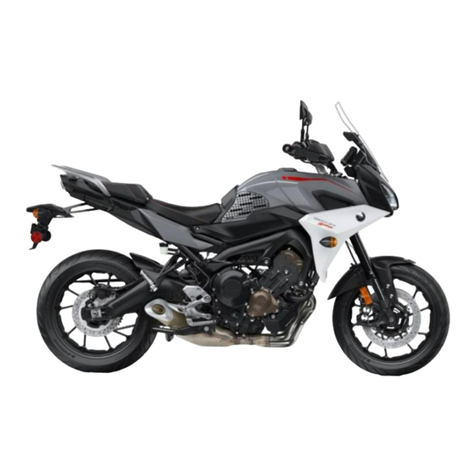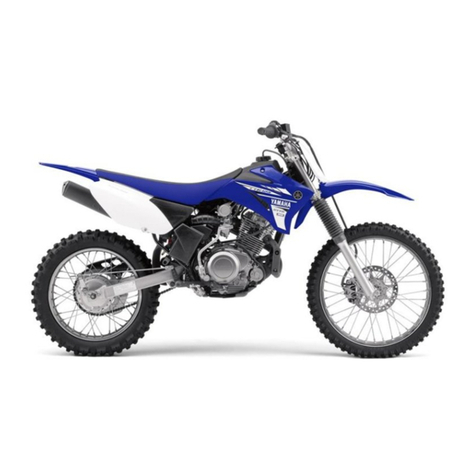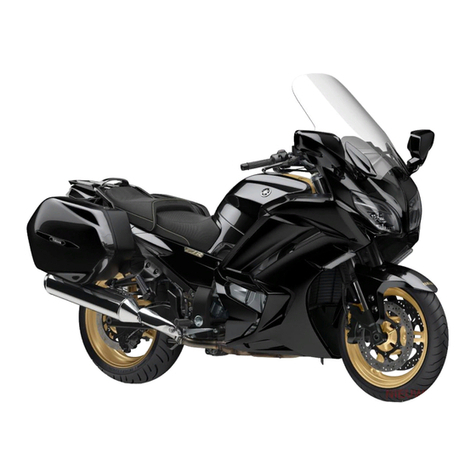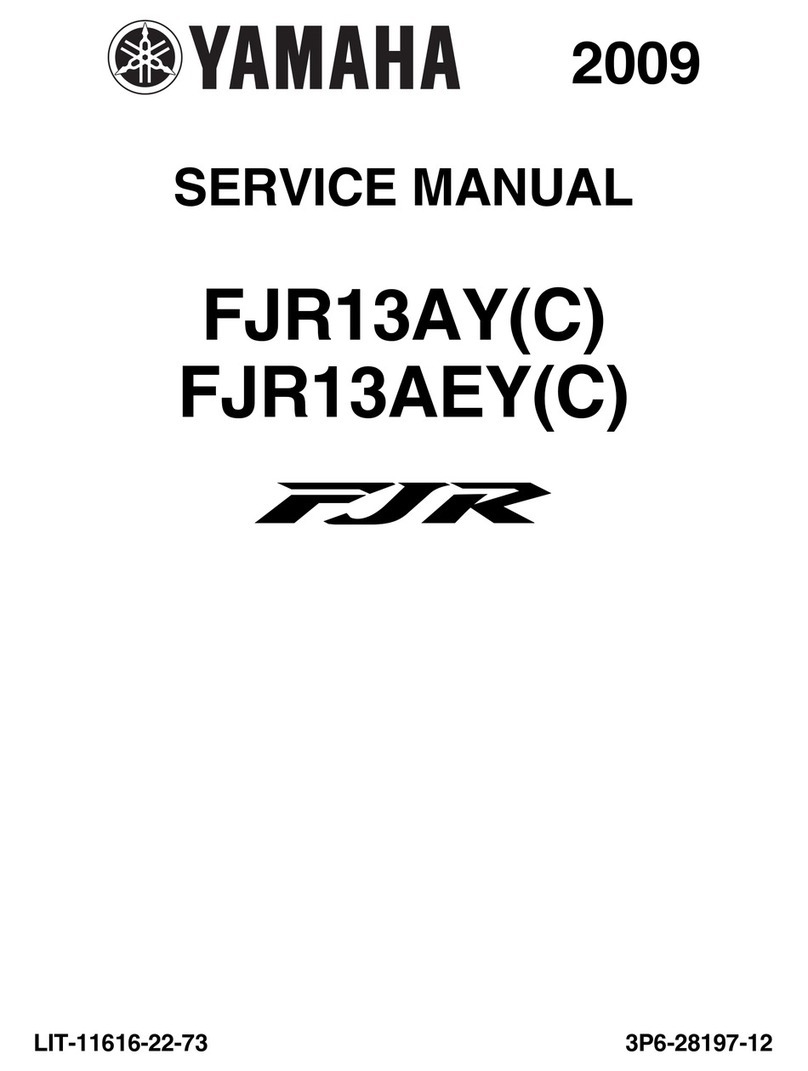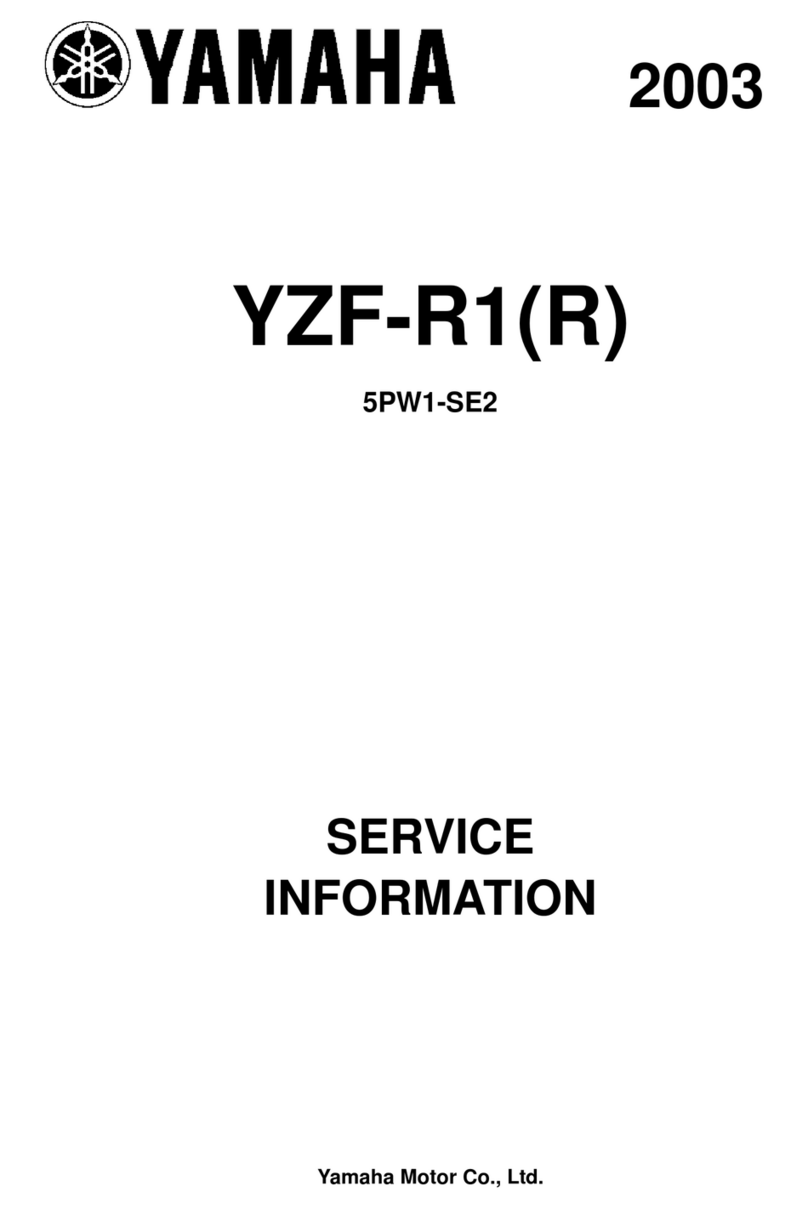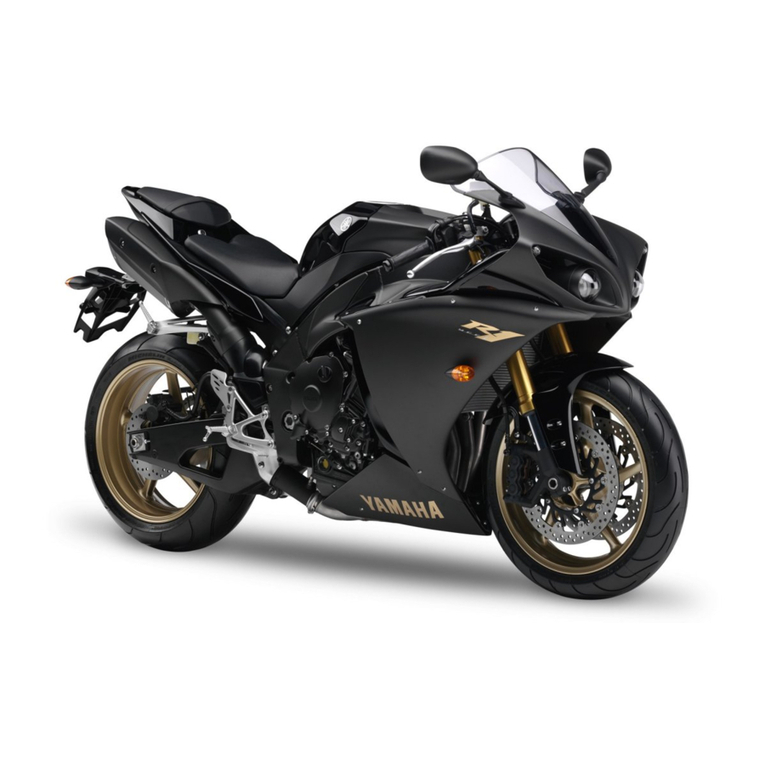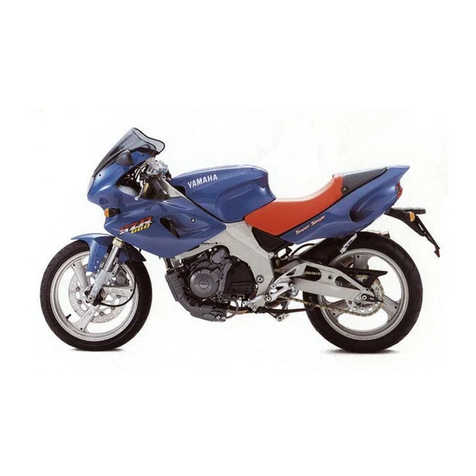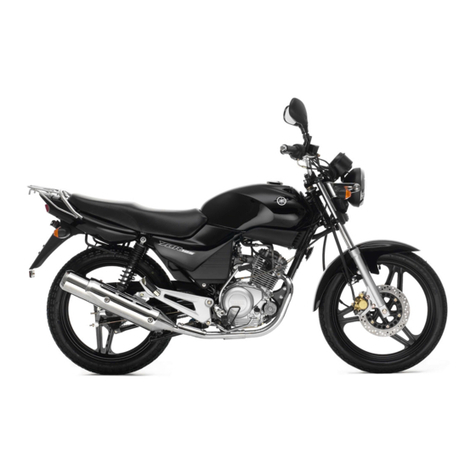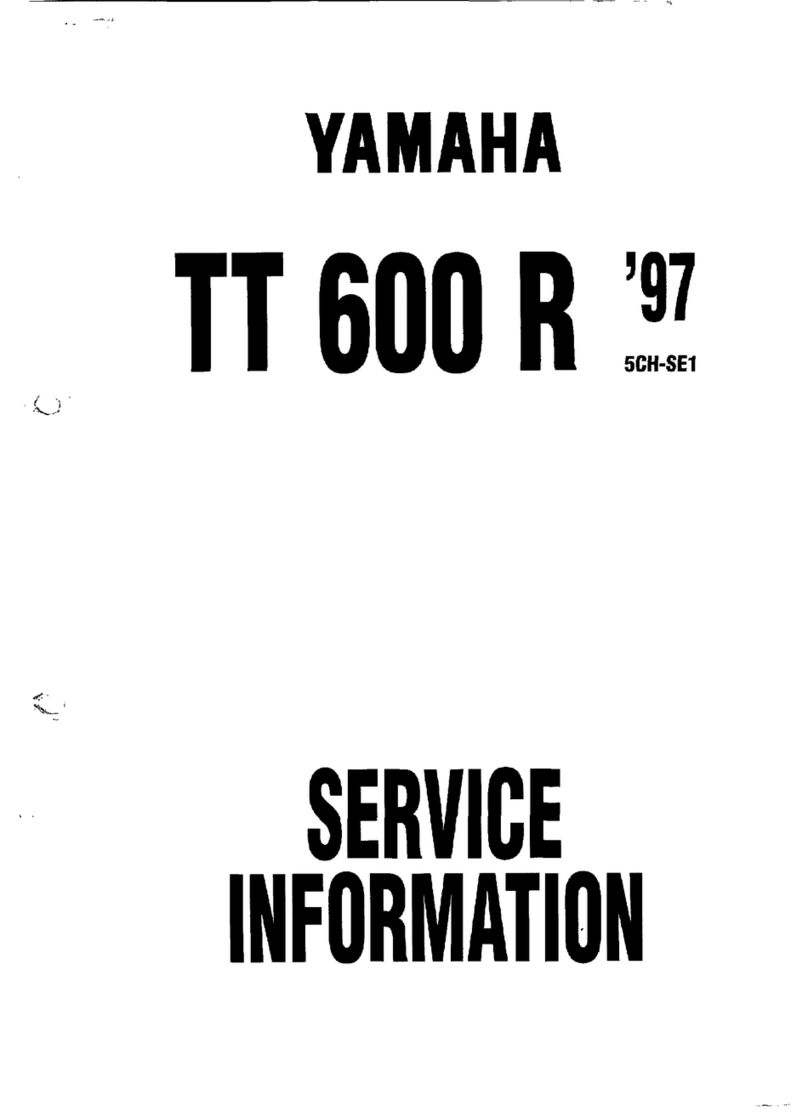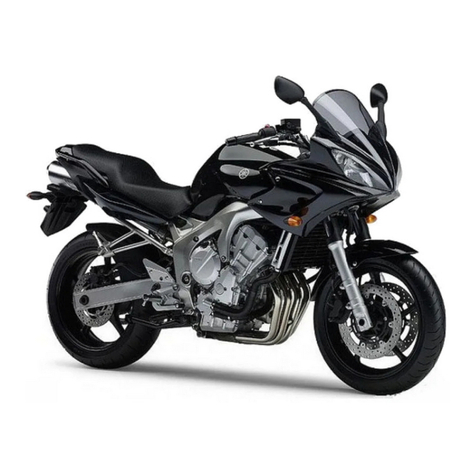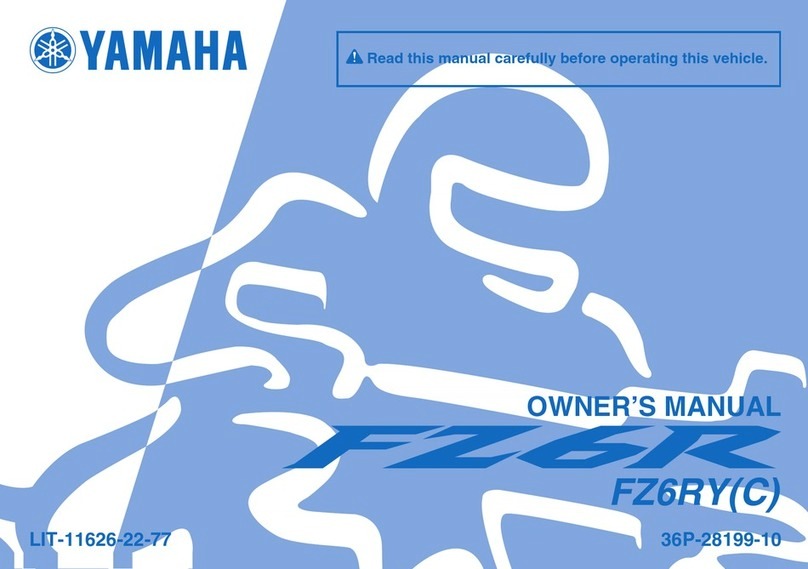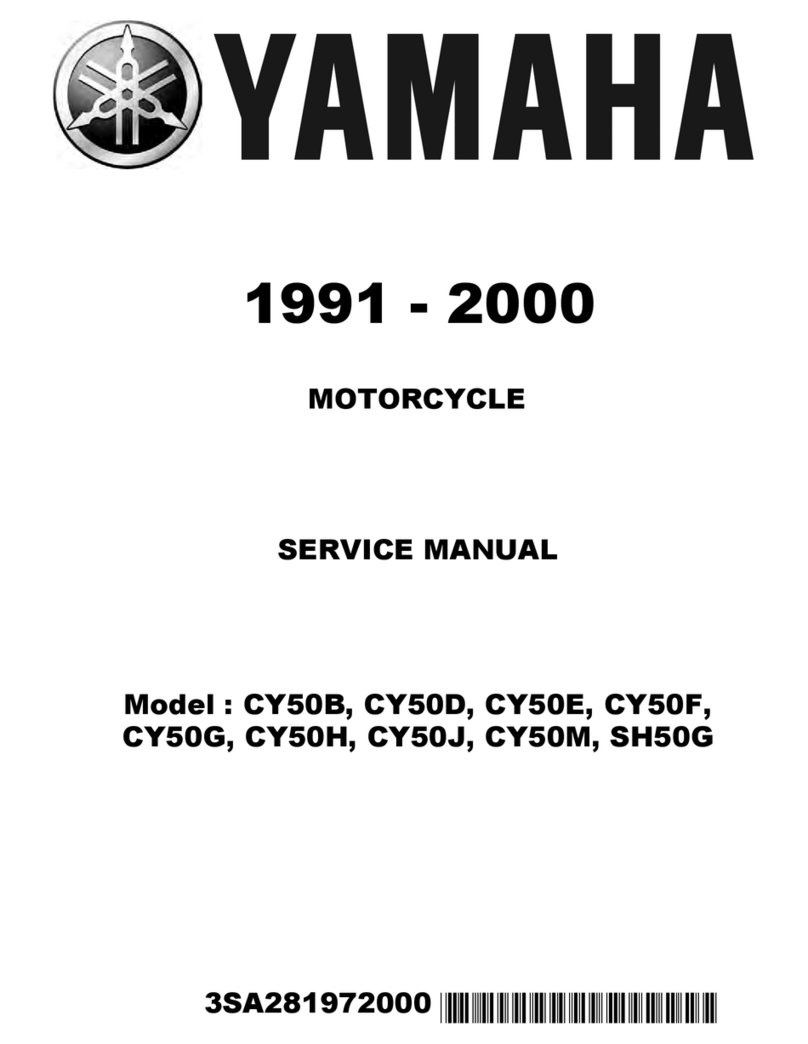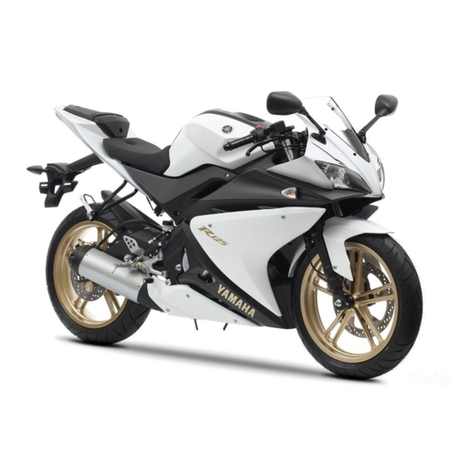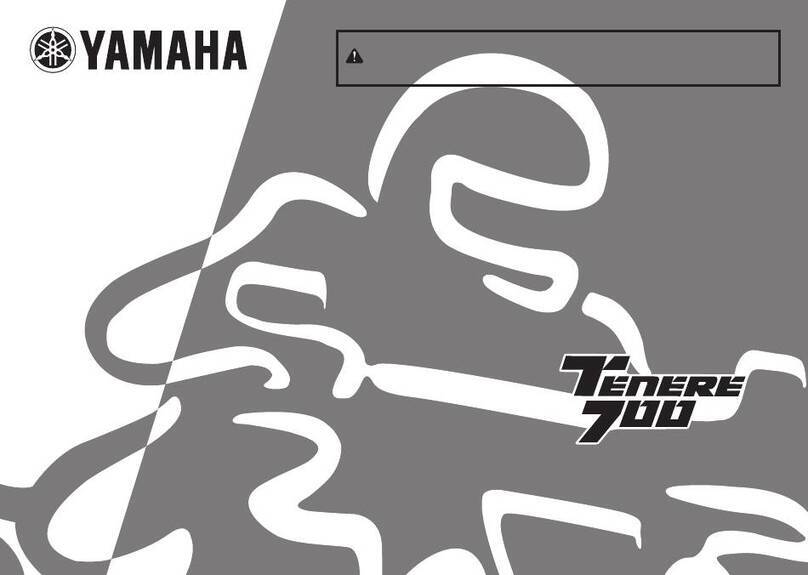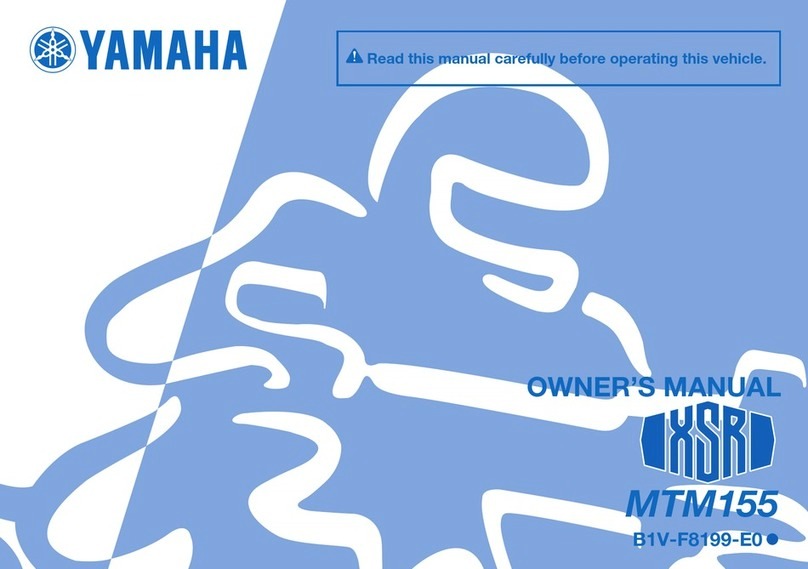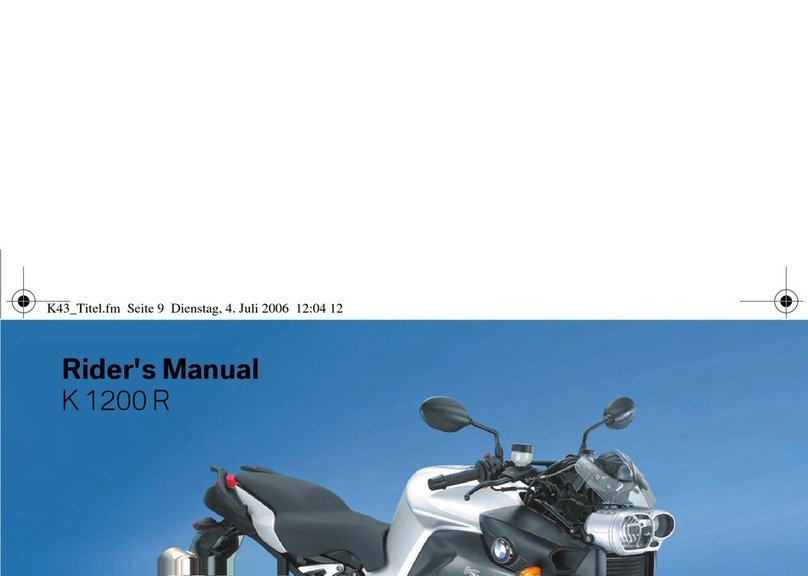
Table of contents
Location of important labels ........... 1-1
Safety information............................ 2-1
Further safe-riding points ............... 2-5
Helmets .......................................... 2-6
Description ....................................... 3-1
Left view ......................................... 3-1
Right view....................................... 3-2
Controls and instruments ............... 3-3
Smart key system ........................... 4-1
Smart key system........................... 4-1
Operating range of the
smart key system ........................ 4-2
Handling of the smart key and
mechanical keys ......................... 4-3
Smart key ....................................... 4-4
Smart key battery ........................... 4-6
Main switch .................................... 4-7
Instrument andcontrol functions... 5-1
Indicator lights and
warning lights.............................. 5-1
Speedometer.................................. 5-2
Tachometer .................................... 5-2
Multi-function display ..................... 5-3
Handlebar switches...................... 5-10
Front brake lever .......................... 5-12
Rear brake lever ........................... 5-12
ABS .............................................. 5-12
Traction control system ................5-13
Fuel tank cap ................................5-15
Fuel ...............................................5-16
Fuel tank overflow hose ................5-17
Catalytic converter ........................ 5-17
Storage compartments .................5-18
Windshield ....................................5-20
Handlebar position .......................5-22
Adjusting the shock absorber
assemblies.................................5-22
Auxiliary DC jack ..........................5-23
Sidestand ...................................... 5-24
Ignition circuit cut-off system .......5-25
For your safety – pre-operation
checks ...............................................6-1
Operation andimportant riding
points .................................................7-1
Engine break-in...............................7-1
Starting the engine..........................7-2
Starting off ......................................7-3
Acceleration and deceleration ........7-3
Braking............................................7-4
Tips for reducing fuel
consumption................................7-4
Parking ............................................7-4
Periodic maintenance and
adjustment ........................................8-1
Tool kit ............................................8-1
Periodic maintenance chart for
the emission control system ....... 8-2
General maintenance and
lubrication chart .......................... 8-4
Removing and installing
the panel...................................... 8-8
Checking the spark plug................. 8-9
Canister ........................................ 8-10
Engine oil and oil filter element..... 8-10
Why Yamalube.............................. 8-12
Final transmission oil .................... 8-13
Coolant ......................................... 8-14
Air filter and V-belt case
air filter elements....................... 8-15
Checking the throttle
grip free play ............................. 8-19
Valve clearance............................. 8-20
Tires .............................................. 8-20
Cast wheels .................................. 8-22
Checking the front and rear
brake lever free play.................. 8-22
Checking the front and rear
brake pads ................................ 8-23
Checking the brake fluid level ...... 8-23
Changing the brake fluid .............. 8-25
Checking the V-belt...................... 8-25
Checking and lubricating
the cables.................................. 8-25
Checking and lubricating the
throttle grip and cable ............... 8-26
UB5XEYE0.book Page 1 Monday, November 16, 2020 8:46 AM
